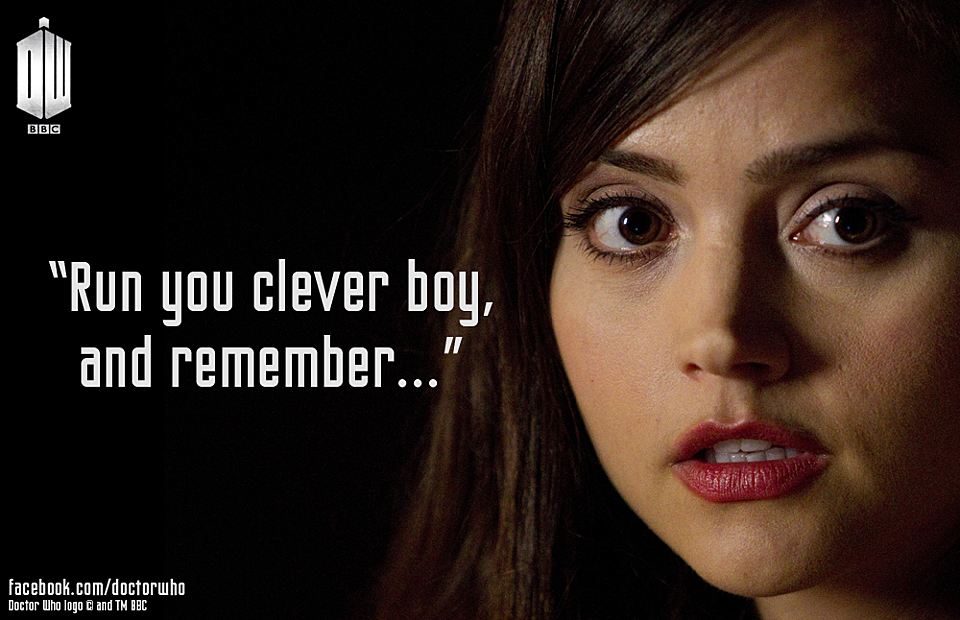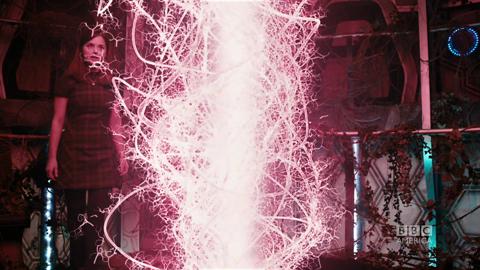The Cultural Lives of Doctor Who: Clara Who?: Re-Imagining the Doctor-Companion Model
 Who is Clara Oswald? This is the question that drives much of the narrative arc for series seven of the hit British sci-fi show Doctor Who (1963-1989, reboot 2005-present). But the question I seem to be asking myself is: What makes Clara different? Is she a new breed of empowered companion or just the most recent incarnation of the standard post-feminist heroine we have come to expect from the program since its 2005 reboot? What is clear, however, is that the dynamics of the relationship between the Doctor and Clara is unique.
Who is Clara Oswald? This is the question that drives much of the narrative arc for series seven of the hit British sci-fi show Doctor Who (1963-1989, reboot 2005-present). But the question I seem to be asking myself is: What makes Clara different? Is she a new breed of empowered companion or just the most recent incarnation of the standard post-feminist heroine we have come to expect from the program since its 2005 reboot? What is clear, however, is that the dynamics of the relationship between the Doctor and Clara is unique.
Just as fundamental to Doctor Who as the Doctor himself (the gendering of who needs to be addressed separately in its own post), the various companions are right at the Doctor’s side for his adventures in time and space. In her work on Doctor Who, Lindy A. Orthia (2010) succinctly characterizes the traditional role of the Doctors’ companions: “Dramatically, the function of companions is threefold: (a) to scream and be rescued, (b) to enable the plot to be explained to viewers, and (c) to provide a point of identification for viewers” (54). The primary companions since the show’s return in 2005—Rose, Martha, Donna, and Amy—maintain this role, yet are at the same time depicted in a post-feminist fashion that suggests that even though the Doctor is represented as smarter, wiser, more educated, and over all better suited for travel through time and space, these women are empowered to make their own decisions and take independent actions as they accompany the Doctor. However, as the “companion” their real-time lives are made to seem secondary, bland, and lacking excitement. Life with the Doctor is often constructed as an escape; they are rescued from banality by a white Time Lord in a blue box. They might disagree with the Doctor, disobey his wishes, and talk back to him, but, in the end, it is the Doctor who saves the day. These post-feminist heroines, while clearly distinguishable from dependent sidekick companions from the show’s first few decades, still easily fit into the Doctor-companion model described by Margaret and Michael Rustin (2008), in “The Regeneration of Doctor Who”, where “The Doctor…took an innocent younger companion on adventures in his special vehicle, and on these adventures protects her and everyone else from danger” (146). But what about the Doctor’s newest companion, Clara? Is she just a reincarnation of this ubiquitous model?
Played by British actor Jenna-Louise Coleman, the character of Clara Oswald is really a series of characters, all similarly named and appearing physically identical. Referred to by the Doctor (portrayed by Matt Smith) as “the impossible girl” (“The Bells of St. John”), Clara is a mystery both to audiences and the Doctor. From the viewers’ perspective, Clara is a character that seems to be immortal, sacrificing her own life to save the Doctor again and again. She runs into the Doctor multiple times, across time and space, each time playing the pivotal role in the Doctor’s success and survival. “Feisty” (“Journey to the Center of the Tardis”), brave, and independent like her predecessors, Clara finds her travels with the Doctor thrilling. Yet the fashion in which the show frames her as a companion is different. Her real-time life is sacrificed in order to replicate herself into what character River Song calls “echoes” (“The Name of the Doctor”); splicing herself in order to be present at every point in the Doctor’s timeline. Clara’s identity is created as inextricably linked to that of the Doctor, her sole purpose to exist caught up in the fabric of the Doctor’s timeline.
As Alec Charles (2008) has previously noted in“The War Without End?”, “It is [the Doctor’s] human companions, his surrogate family, who provide not only the emotional center and the moral compass but also the dramatic and diegetic motivation for the series” (459). Yet, in the case of Clara, her role is more than just indeterminate member of his surrogate family; she is his surrogate mother. Connoted as irrefutably maternal—most explicitly shown through her employment as a Victorian governess in “The Snowmen” and a nanny in what could be understood as her real-time life—it could be argued that Clara is merely the traditional mother archetype, just re-packaged. In the final episode of the current series, “The Name of the Doctor,” she explains to the viewer that “I’m born, I live, I die. And always there’s the Doctor.” It is at the end of this episode that we are provided the answer to the question: Who is Clara? She tells the audience “Always I’m running to save the Doctor. Again, and again, and again…I’ve always been there, right from the beginning.” Taking on the responsibility of the Doctor’s well-being, Clara positions herself as the Doctor’s caretaker.
Clara’s independence and brash nature can seem like a break with the normative femininity that framed the characterization of the previous companions. However, the revelation that this companion was “born to save the Doctor” ultimately aligns her with a regime of representation that constructs motherhood, and the self-sacrifice inherent in that, as the paramount purpose of women. Yet as a character that has redefined the Doctor-companion relationship, Clara is able to stand apart from the more recent post-feminist companions by flipping the savior-saved dynamic on its head; simultaneously fulfilling the traditional, modern, and re-imagined companion roles.
This is the second post in Antenna’s new series The Cultural Lives of Doctor Who, commemorating the television series’ fiftieth anniversary and its lasting cultural legacy. If you missed Matt Hills’ inaugural post earlier this month, you can read it here. Stay tuned for regular posts in the series throughout the remaining months of 2013.






As much I like Coleman’s performance, it feels like Clara predominantly functions in exactly the roles you describe. She isn’t “traditional” OR “modern” in this sense, but rather is the ultimate (to date) version of the archetypal Doctor Who companion. In other words: a companion that’s really like no other companion, but simultaneously seems like all of them.
But that’s because our sense of “all of them” (like “all” the Doctors, but that’s a whole other discussion…) is mostly constructed not from the on-screen evidence, but from discursive fan and scholar shorthand about what these characters were broadly like. Thus, the usual retrospective construction of female companions, post-2005 at least (seen here in the Orthia reference), places all of them in the same box, and labels it “traditional.”
The problem with this is that there really aren’t that many original series companions this limited definition could apply to. Barbara was consistently intelligent, resourceful, and skeptical of the Doctor’s ostensible wisdom. Polly (vastly underrated) was unflinchingly curious and brave. Zoe, intellectually the Doctor’s equal, proactively offered solutions. Liz chafed at being an “assistant,” and worked as much as she could as the Doctor’s equal. Jo regularly disobeyed the Doctor, luckily for him, as she rescued him on numerous occasions (and saved the planet and/or universe herself a few times as well!). Sarah, despite seemingly softening over the years, never took the Doctor’s authority too seriously. Leela never screamed, and regularly joined various rebels. Romana (at least with Mary Tamm) archly undercut the Doctor’s chauvinism. Nyssa, like Zoe, didn’t wait for the Doctor to tell her what to do. And Ace, while manipulated into a sort of extended therapy session by the Doctor, always led with her own sense of justice and action. Granted, that still leaves Susan, Vicki, Dodo, Tegan, and Peri, as closer to the ostensibly “traditional” markers, but even they had their moments.
Clara had the misfortune to come along in the anniversary year, where just being the latest companion was apparently not an option, and where the past (including parts of the past we didn’t even know were important) portentously weighs on the present. Thus, Moffat has cast Clara not so much into the Doctor’s timeline, but into the ostensible fan-authored Doctor Who timeline, where she fulfills ultimate “companion-ness,” but sadly without being able to function as an actual companion.